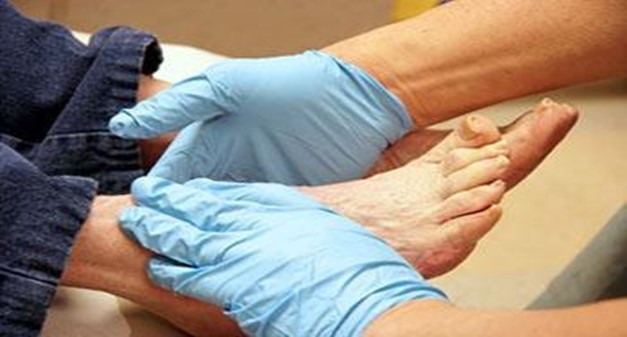Visiting a Foot Clinic in Singapore for Healthier Feet

In today’s modern busy life, it’s easy to overlook our feet—those humble structures that bear the weight of our entire bodies day in and day out. Yet, when something goes wrong with our feet, it can significantly impact our quality of life. Whether it’s a nagging pain, a persistent infection, or a deformity that’s causing discomfort, visiting a foot clinic in Singapore could be the first step towards regaining your mobility and comfort.
But what exactly should you expect from such a visit? In this comprehensive guide, we’ll walk you through the journey to healthy feet, detailing what you can anticipate during your appointment at a foot clinic.
Understanding the Importance of Foot Health
Before diving into what to expect during your visit, it’s crucial to understand why foot health is so important. Our feet are intricate structures composed of bones, muscles, tendons, and ligaments, all working in harmony to provide balance, mobility, and support.
However, due to various factors such as poor footwear choices, chronic diseases like diabetes, or simply the wear and tear of daily activities, our feet can suffer from a range of issues.
Ignoring foot problems can lead to more severe health complications, including chronic pain, mobility issues, and even infections that could spread to other parts of the body. Therefore, seeking professional help is essential for maintaining overall health and well-being.
The First Step: Booking Your Appointment
The journey to healthy feet begins with booking an appointment with a podiatrist. You can typically do this via phone, online booking systems, or through a referral from your general practitioner (GP). When booking, you may be asked about the nature of your foot problem to determine the urgency of your visit.
It’s advisable to choose a clinic that specialises in podiatry—a branch of medicine focused on diagnosing and treating foot, ankle, and lower limb conditions. Singapore is home to several highly regarded podiatry clinics, each offering a range of services tailored to various foot health needs.
Preparing for Your Visit

Preparation is key to making the most out of your visit to a foot clinic. Here are a few steps to ensure you’re well-prepared:
- Bring Medical Records: If you have any previous medical records related to your foot condition, bring them along. This includes X-rays, MRI results, or notes from previous consultations.
- List Down Symptoms: Make a note of all the symptoms you’re experiencing, including when they started, how often they occur, and any activities that worsen or alleviate the symptoms.
- Footwear: Wear or bring along the shoes you use most often. Your podiatrist may want to assess your footwear to determine if it’s contributing to your foot problems.
- Medication List: If you’re taking any medications, bring a list of them, as some conditions may be affected by medication.
What to Expect During the Consultation
Your first consultation with a foot specialist will usually begin with a comprehensive consultation. This is your opportunity to discuss your symptoms, concerns, and any previous treatments you may have tried. Here’s what you can expect during this initial consultation:
1. Patient History and Symptom Review
The podiatrist will begin by taking a detailed medical history, not only focusing on your foot health but also considering your overall health. This includes asking about any chronic conditions, such as diabetes or arthritis, that may affect your feet. You’ll also be asked to describe your symptoms in detail.
2. Physical Examination

A thorough physical examination of your feet will follow. The podiatrist will check for signs of deformity, swelling, redness, or other abnormalities. They may also assess your gait (how you walk) to identify any issues with your posture or the way you distribute weight across your feet.
3. Diagnostic Tests
Depending on the nature of your symptoms, the podiatrist may recommend diagnostic tests. These could include:
- X-rays: To detect fractures, bone deformities, or signs of arthritis.
- Ultrasound: Useful for evaluating soft tissue injuries such as ligament tears or tendonitis.
- MRI: In cases where a more detailed view of the foot’s internal structures is needed, an MRI may be recommended.
- Blood Tests: If there’s suspicion of an infection or inflammatory condition, blood tests might be ordered.
Treatment Options: What Lies Ahead
After the consultation and any necessary diagnostic tests, your podiatrist will discuss the findings with you and outline a treatment plan. Treatment options can vary widely depending on the diagnosis, but here are some common approaches:
1. Conservative Treatments
In many cases, foot problems can be managed with conservative treatments, which are non-invasive and aim to relieve symptoms without surgery. These might include:
- Orthotics: Custom-made shoe inserts designed to correct foot alignment and provide better support.
- Physical Therapy: Specific exercises and stretches to strengthen the muscles in your feet and improve flexibility.
- Medication: Anti-inflammatory drugs or pain relievers may be prescribed to manage pain and reduce inflammation.
- Footwear Advice: The podiatrist may recommend changes to your footwear, such as switching to shoes with better arch support or using cushioned insoles.
2. Surgical Interventions
If conservative treatments are ineffective, surgery might be considered. This is usually a last resort and is reserved for severe cases, such as:
- Bunion Removal: Surgery to correct the deformity of the big toe joint.
- Hammer Toe Correction: Surgical straightening of a toe that’s bent at the middle joint.
- Plantar Fascia Release: A procedure to relieve the tension in the plantar fascia, often used to treat chronic plantar fasciitis.
- Debridement: Removal of dead, damaged, or infected tissue to promote healing, especially in cases of diabetic foot ulcers.
Post-Treatment Care: Ensuring Long-Term Foot Health

After receiving treatment, whether it’s conservative or surgical, the next phase of your journey is focused on recovery and long-term foot health. Your podiatrist will provide specific instructions for post-treatment care, which may include:
1. Follow-Up Appointments
Regular follow-up appointments are crucial to monitor your progress and make any necessary adjustments to your treatment plan. These visits ensure that you’re healing properly and help prevent any recurrence of the issue.
2. Home Care Instructions
You’ll likely be given instructions for home care, such as specific exercises, wound care, or guidelines for gradually returning to normal activities. Adhering to these instructions is key to a successful recovery.
3. Preventive Measures
To maintain healthy feet in the long term, your podiatrist may recommend preventive measures, including:
- Proper Footwear: Continue wearing shoes that provide adequate support and cushioning.
- Foot Hygiene: Regularly washing and moisturizing your feet to prevent infections and dry skin.
- Regular Foot Checks: Especially important for individuals with diabetes, who are at higher risk of foot complications.
The Role of a Foot Clinic in Chronic Conditions
For patients with chronic conditions like diabetes or arthritis, regular visits to a foot clinic are essential. These conditions can lead to serious foot complications, such as neuropathy (nerve damage) or ulcers, which require ongoing management.
At a foot clinic, you can expect to receive comprehensive care that includes regular foot examinations, specialized treatments, and education on how to manage your condition effectively. This proactive approach can help prevent complications and improve your overall quality of life.
The Psychological Aspect: Addressing Foot Health Anxiety

It’s not uncommon to feel anxious about foot health, especially if you’re facing the possibility of surgery or dealing with chronic pain. Singaporean foot clinics often take a holistic approach, addressing not just the physical but also the psychological aspects of foot care.
Podiatrists understand the anxiety that can accompany foot problems and are equipped to provide reassurance and support throughout your treatment journey. They can help you understand your condition, set realistic expectations, and guide on coping strategies.
Conclusion: Stepping Towards a Healthier Future
Visiting a podiatry clinic is the first step towards healthier feet and a better quality of life. Whether you’re dealing with a minor issue or a more serious condition, the journey to recovery involves a comprehensive approach that includes diagnosis, treatment, and ongoing care.
By understanding what to expect during your visit, you can approach your appointment with confidence, knowing that you’re taking a proactive step towards maintaining your foot health. With the right care and guidance, you’ll be well on your way to walking comfortably and confidently once again.